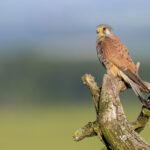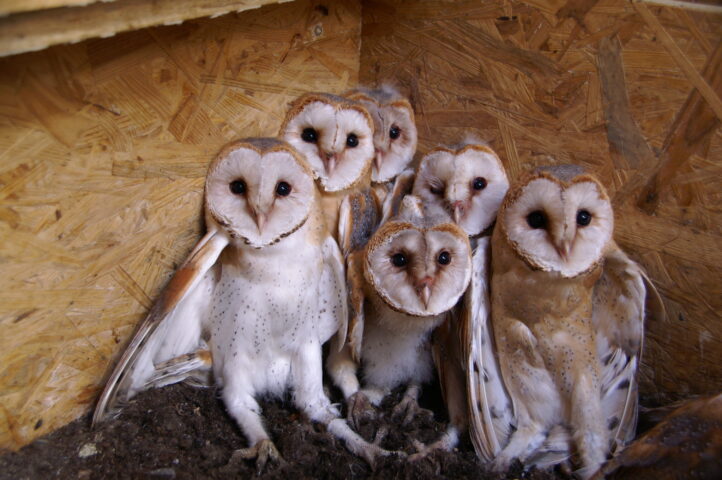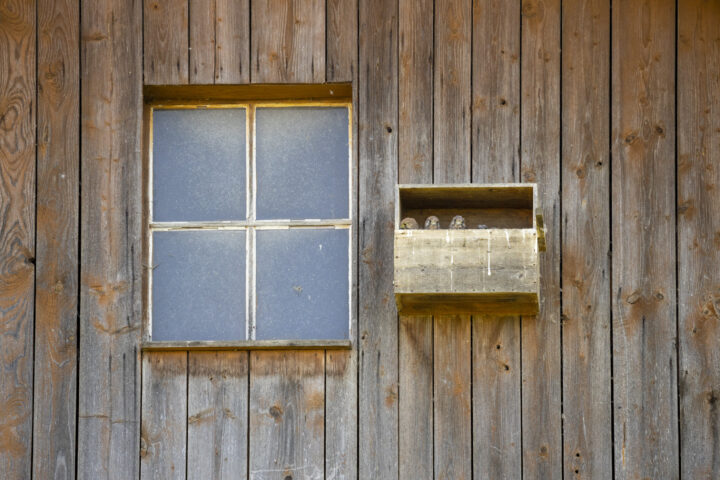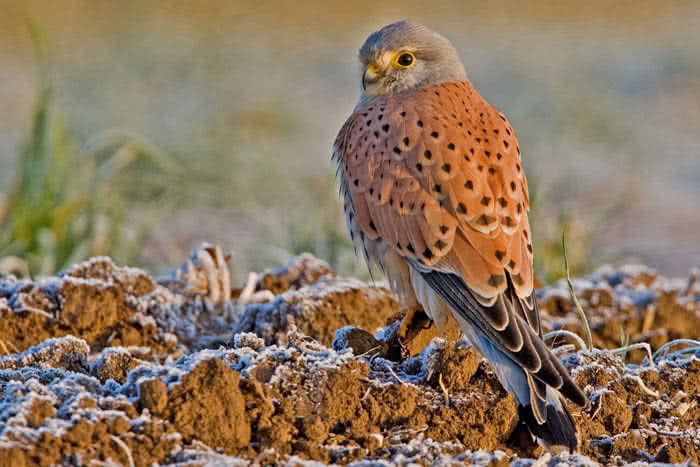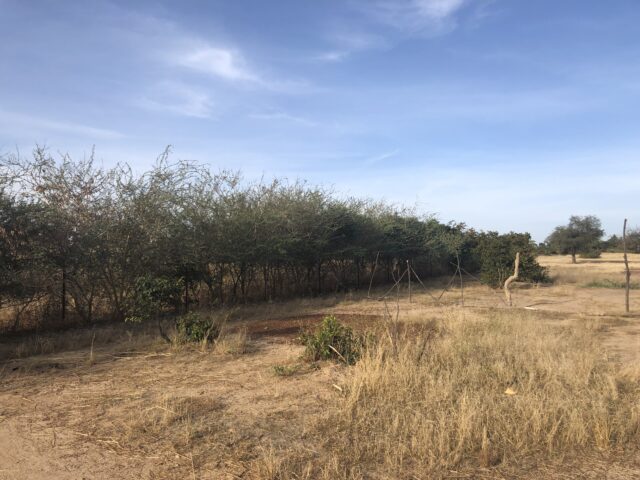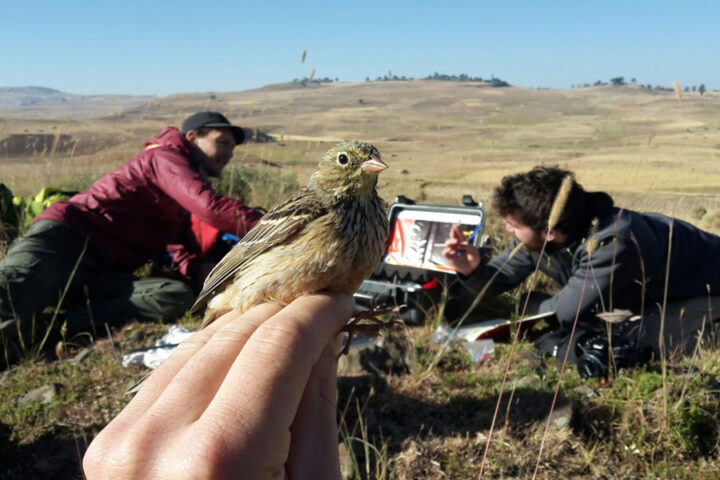In Switzerland, the Common Kestrel and the Common Barn Owl live mainly in cultivated land and tend to hunt small mammals such as voles. For a long time now, the intensification of agriculture and especially the disappearance of small field barns has caused problems for both species. There has been a lack of nesting sites and extensively managed areas for foraging. Both species have since recovered thanks to the commitment of numerous volunteers, who install and maintain nesting aids for these species. The well-being of the two species therefore depends on the efforts of the many volunteers and the farmers who promote biodiversity on their land.
Common Kestrel
Common Barn Owl nestlings in a nesting box.
Young Common Kestrels in the nesting box can be seen and counted from the ground from the age of three weeks.
Species promotion Common Kestrel and Common Barn Owl
A network of volunteers helps Common Kestrels and Common Barn Owls
Domain
Conservation
Unit
Species Recovery
Topic
Species Recovery, Population Development, Habitat Promotion
Habitat
farmland, semi-open farmland, meadows and pastures
Project start
2002
Project status
ongoing
Project management
Anja Marty
Project region
Switzerland
Project team members
Betroffene Vogelarten
Unit
Species Recovery
Wildlife conservation coordinates the development, improvement and dissemination of measures in favour of priority bird species that cannot be helped by habitat protection alone. Together with BirdLife Switzerland and the Federal Office for the Environment (FOEN), the department also coordinates the “Species Recovery for Swiss Birds” programme.




